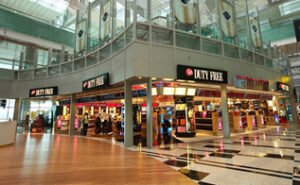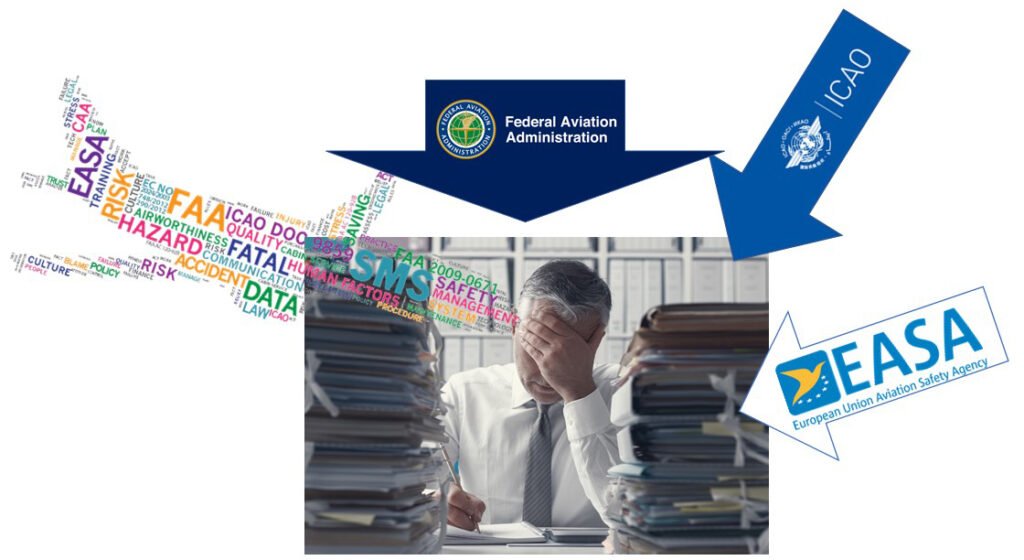COronaVIrus Disease (COVID-19) pandemic is a real threat!
Not only that the volume of traffic reached almost to zero, but the return to operation will also be a constant struggle to comply with numerous regulations, recommendations, standards, and state rules.
In this chaos, while the airport and its customers struggle to survive, and the passengers are afraid to get the virus – the Banner Aviation Group can help in overcoming the challenging stigma and inevitable navigation of subsequent regulation and restrictions to ensure your airport finds the most suitable, economic and effective solution to each airport.


Empty counters due to Corona
Although it is not defined yet when operations will restart, it is important that aerodromes are prepared in order to resume operations safely.
For this reason, under their safety management system and in cooperation with air navigation service providers, the aerodrome operators should establish a plan that should be implemented prior to the start of operations.
Our airport executives, planners, operators, and medical care specialists will ensure that the most effective solution is identified and tailor-made for each airport.
The Challenge
To efficiently operate the airport while complying with all the relevant regulations and standards.

COVID19 Regulations and Standards
How can we do it?
The Banner Aviation Group’s experts will combine the latest know-how with best practices and the most suitable technology means to ensure a tailor-made solution to each airport.
Guiding Principle 1 — Collaboration
Airports are extremely complex ecosystems and no operational decisions can be taken in isolation to the broader impact on other stakeholders. Early involvement of relevant stakeholders in planning and procurement can help ensure a fit-for-purpose solution is identified and ultimately adopted.
Guiding Principle 2 — Balanced Risks and Rewards
Airport operators and customers are highly interdependent and have a shared goal of creating and operating a safe, functional, cost-efficient assets that maintain an appropriate level of service.
Guiding Principle 3 — Transparency and Information Sharing
The modern airport is increasingly becoming data-driven with advanced airports being the ones that capture all relevant data to inform critical operational and commercial decisions. Transparency and seamless information sharing between members of an airport ecosystem allow leasee’s, concessionaires, and customers to act in a communally advantageous manner and improve efficiency and effectiveness of both day-to-day operational and strategic decisions.
Guiding Principle 4 — Mutual Interest
Leases and Concession agreements typically focus on the asset owner and leasee’s and concessionaire’s interests. However, the obligations and actions or inactions of these stakeholders and/or the asset owner can detrimentally affect the interests of other stakeholders, most critically the ultimate consumer the flying public

Our Proposed Concept – it’s not just a quick fix- we strive to provide programs that can be applied to future issues
Yes, sometimes you ask for consultants, pay good money and at the end of a long process, you’re left with a piece of paper that will not be used!

Technology should be carefully adopted – mass temperature scan
Frustrating, indeed.
Therefore, we have created the phased approach to ensure that our customers get EXACTLY what they expected, and if possible – way beyond.
Expectations of Airport Management, of local elected officials, airport commissions and board members, tenet’s and their employees, security, ground handling, ground transportation service providers and other stakeholders
The Phased Approach to COVID19 Compliance
We learn before we engage
Immediately after the project’s kickoff, we will dedicate 1-2 weeks to learn your environment. This learning process will cover both your internal environment and the outer one and will include a short visit to the airport.
During this learning phase, we will map the relevant regulations, standards and rules, in order to fully understand the constraints and requirements with which we will need to comply.
We will also get familiar with the current and expected operations, so we can plan the alternatives according to the airport’s unique characteristics.
At the end of this phase, we can submit a comprehensive proposal, that will detail the next two steps, BUT you commit only for the next one.
We Analyze before we solve
Our team will analyze your specific situation.
The team will include at least the following subject matter individuals:
- Airport Executive who knows how an airport really operates and ensures that the solutions are workable
- Airport Planner who is actively and intimately involved in implementation processes, so whatever we recommend is possible
- Health Care specialist, who ensure that while we follow all the directives and comply with all the regulations we do not overdo, and we use the correct and most cost-effective solutions to achieve our goals.
This team will be enforced with any other subject matter as required.
One important part of our analysis is that we develop COVID19 pertinent scenarios, that will ensure that the end product can provide our customers not only with a solution to the current challenges but also to probable future scenarios.
In the end – we provide alternatives and are able to assist in the implementation
We will come to you with several alternatives for you to choose from.
After selecting the most appropriate solution we will help in converting the selected option to a work plan, and if needed we can also lead the project until completion.
Possible COVID19 Requirements and Standards for Airports
The International Civil Aviation Organization (ICAO) has defined that:
Aerodrome operators must undertake emergency planning for public health emergencies. Standards and Recommended Practices on aerodrome emergency planning include provisions for public health emergencies.

ICAO Aerodrome emergency planning, relevant to COVID19
EASA Directive regarding COVID19
Safety Information Bulletin, Aerodromes, SIB No.: 2020-07 Issued: 04 May 2020
Following the outbreak of COVID19 and due to the limitations imposed by individual States, the majority of flights have been suspended.
Aerodromes have been forced to scale down or suspend their operations until flights resume.
Furthermore, in many aerodromes across Europe, operational areas such as runways and taxiways are used for the long-term parking of grounded aircraft; aerodrome systems such as airfield lighting and radio navigation aids have been switched off and regular inspections and maintenance may not always be performed according to schedule.
All existing agencies that could be of assistance in responding to an emergency must participate in such planning.
Aerodrome operators together with air navigation service providers, when preparing to resume operations, are recommended to consider in their plan at least the following:
1. Overall inspection of the paved, unpaved surfaces and surroundings, paying attention to EASA SIB No.: 2020-07
general cleanliness, presence of foreign object debris and any signs of damage to the pavement surface, which could pose a risk to the aircraft operations;
leakages and depressions due to long term parked aircraft;
presence of wildlife, which might have increased in the absence of regular operations;
condition of fences;
drainage systems;
the state of the vegetation to ensure that lights, signs, and markers are not obstructed;
condition of movement area markings to ensure adequate visibility;
markings and lighting of authorized obstacles, and any new unauthorized obstacles particularly temporary in nature (e.g. mobile cranes) which may impact the safe operation of aircraft.
2. The proper functioning of the electrical power supply systems for air navigation facilities and lighting systems, including signs.
3. The proper functioning of the radio and other navigation aids.
4. Rescue and firefighting level of protection in accordance with the expected traffic and rescue and firefighting services vehicles and equipment are properly functioning.
5. The alarm system for the notification of rescue and firefighting services is functioning.
6. Communication systems used during normal and emergency operations are functioning.
7. Aircraft parked on the maneuvering area do not infringe the obstacle limitation surfaces, the critical and sensitive areas of radio navigation aids serving the active runway(s), and the line of sight of air traffic control. Information on such closed parts of the maneuvering area is made available through a notice to airmen (NOTAM).
8. Emergency access roads of rescue and firefighting vehicles to the active runway(s) are unobstructed.
9. If a runway or other sections within the maneuvering area are closed due to parked aircraft, the lighting and radio navigation aids of the runway or the section exclusively are switched off and a NOTAM is issued.
10. Capability for removal of disabled aircraft.
11. Availability and competency of staff to carry out their tasks and human factor associated risks due to reduced activity levels.
12. Any reported actions are planned and implemented, before resuming operations if needed, including training, inspections, compliance monitoring, corrective action plans (CAPs).
13. The published information in Aeronautical Information Publication (AIP), AIP Supplement (AIPSUP), and NOTAM in respect to the actual aerodrome operational situation.
14. Facilities and equipment used for aircraft fuelling provide the aircraft with uncontaminated fuel and of the correct specification.
15. Construction or maintenance work sites are appropriately marked and lighted. For ongoing changes or when resuming construction works, ensure hypothesis and mitigating measures are still relevant and implemented.


